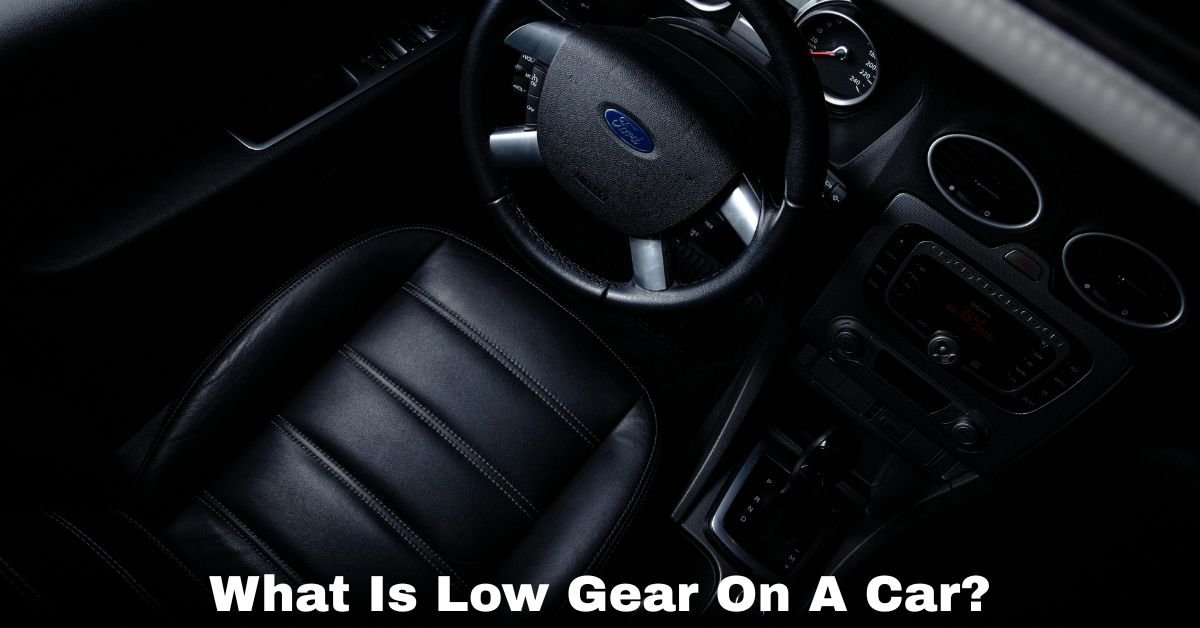If you’ve ever driven a car with an automatic or manual transmission, you may have noticed something called “low gear.” You might have seen the letters “L,” “1,” or “2” on the gear shifter, or heard someone say, “Put it in low gear!” But what exactly is low gear on a car, and when should you use it?
In this post, we’ll break down what low gear means, how it works, and why it’s important for certain driving conditions.
What is Low Gear on a Car?
Understanding Car Gears
To understand low gear, we need to understand how gears work in general.
Gears are part of a car’s transmission system, which controls how power from the engine is transferred to the wheels. When a car is in high gear, it’s set up to go faster but with less torque (pulling power). In low gear, the car goes slower but has more torque.
Think of it like riding a bicycle. When you pedal uphill, you shift to a lower gear to make pedaling easier, even though you’re moving slower. The same principle applies to cars.
What is Low Gear?
The term “low gear” describes the lowest gear ratios that a car’s transmission can have. In an automatic transmission, this is usually labeled as L, 1, or 2 on the gear selector. In a manual transmission, this would be first gear or second gear.
When your car is in low gear:
- The engine sends more torque to the wheels.
- The car has greater power to pull or climb, but it moves more slowly.
- The engine runs at a higher RPM (revolutions per minute), meaning it works harder but gives more force.
When Should You Use Low Gear?
Low gear isn’t something you’ll use all the time. It’s designed for specific driving situations where you need more control or more torque. Here are the most common times to use low gear:
1. Driving Down Steep Hills
When going downhill, especially on a steep grade, switching to low gear helps you slow down using engine braking instead of constantly pressing the brake pedal. This enhances vehicle control and lessens brake wear.
Must Read: How To Reset GMC Infotainment System?

2. Climbing Steep Inclines
Low gear allows your car to climb hills without putting undue load on the engine. It prevents the car from slowing down or stalling on steep roads.
3. Towing Heavy Loads
If you’re towing a trailer or carrying a heavy load, low gear gives your vehicle the power to handle the extra weight, especially when starting from a stop or climbing a hill.
4. Driving on Slippery Surfaces
In conditions like snow, mud, or sand, using low gear can prevent your wheels from spinning too quickly. This improves your control and helps you keep traction.
How to Use Low Gear
To shift into low gear in an automated car, move the gear lever to L, 1, or 2. In some modern vehicles, you can use paddle shifters or buttons to manually select lower gears.
In manual cars, you control the gears directly. When you need low gear, simply stay in first or second gear depending on your speed and the road condition.
Always refer to your vehicle’s manual for specific instructions, especially for automatic transmissions, as features vary between models.
Pros and Cons of Low Gear
Pros:
- Better control on hills
- Increased torque for tough conditions
- Less brake wear on descents
- Improved towing performance
Cons:
- Lower speed
- Higher fuel consumption if used unnecessarily
- More engine noise due to high RPM
Final Thoughts
Low gear is a valuable feature in any car, though it’s not used in everyday driving. Understanding when and how to use it can improve your safety, extend the life of your brakes, and make your vehicle more capable in tough situations. Whether you’re heading into the mountains or pulling a trailer, knowing how to shift into low gear can make a big difference.
So next time you’re faced with a steep hill or slippery road, remember: low gear is your car’s way of giving you more control and power when you need it most.
